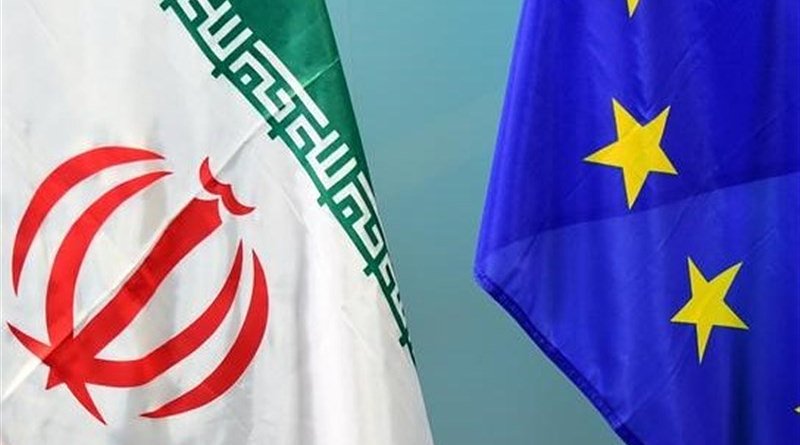INSTEX Fails To Support EU-Iran Trade As Nuclear Accord Falters
By EurActiv
By Alexandra Brzozowski
(EurActiv) — Three European powers, France, Britain and Germany, informed the EU on Tuesday (14 January) that they are triggering a dispute mechanism in the Iran nuclear deal following renewed violations of the deal by Tehran.
“We have been left with no choice, given Iran’s actions…but to refer this matter to the Joint Commission under the Dispute Resolution Mechanism, as set out in paragraph 36 of the JCPOA,” said a joint E3 statement, on the Joint Comprehensive Plan of Action (JCPOA), commonly referred to as the Iran nuclear deal.
The statement said the E3 had fully upheld their JCPoA commitments, “including sanctions-lifting as foreseen under the terms of the agreement”.
“In addition to the lifting of all sanctions, required by our commitments under the agreement, we have worked tirelessly to support legitimate trade with Iran, including through the INSTEX special purpose vehicle.”
INSTEX was created by the E3 in January 2019 as a special purpose vehicle to help EU companies do business with Iran and facilitate non-USD transactions to bypass and avoid breaking US sanctions.
According to Reuters, EU diplomats said Tuesday’s decision was aimed at saving the deal by discussing with Iran how to reverse decisions it had made. The aim was not to reimpose UN sanctions, the diplomats added.
“At one point we have to show our credibility,” one diplomat said referring to Iran’s recent nuclear decisions. “Our intention is not to restore sanctions, but to resolve our differences through the very mechanism that was created in the deal,” a second diplomat told Reuters.
EU-Iran trade in decline
Iran reduced its commitments from the 2015 nuclear deal in response to Washington’s withdrawal from the deal in 2018. The latest step back from the accord came when Tehran announced on 4 January it would scrap limits on enriching uranium, though it said it would continue to cooperate with the UN nuclear watchdog.
However, Iran had consistently stressed that these steps would be reversed as soon as Europe implemented practical ways to shield mutual trade from the US sanctions.
Meanwhile, INSTEX has become a point of contention between Europe and the Trump administration, with Washington effectively threatening to sanction anyone using the mechanism.
Since 2015, large corporations had withdrawn from trading with Iran.
From January to the end of October 2019, the volume of trade between the EU and Iran totalled €4.3 billion, which is a 75% decline year-on-year, according to trade statistics of the Iran-Germany Joint Chamber of Commerce (AHK).
While European exports to Iran fell by 53% to €3.7 billion compared with the same period in 2018, Iranian exports to Europe slumped by 94% to €586 million.
However, European efforts to ensure continued trading with Tehran despite the sanctions have so far had little impact, raising doubts about whether INSTEX an effectively boost the battered Iranian economy.
Several sources have even confirmed to EURACTIV that there had been no transactions through the mechanism so far, though it has been staffed and operational, having already been in contact with EU-Iranian businesses. However, there is hope to carry out transactions shortly, the sources added.
A planned 12 January visit to Iran by the head of Iran-EU trade channel, Michael Bock, to discuss the latest developments with the long-delayed mechanism had been postponed based on “negative travel advice”. Instead, Bock is meant to have an exchange of views with lawmakers of the European Parliament’s Iran delegation on Wednesday.
European interest to join INSTEX
In late 2019, six European countries – Finland, Belgium, Denmark, Netherlands, Norway, and Sweden – joined the INSTEX and reiterated that they “attach the utmost importance to the preservation and full implementation of the JCPOA by all parties involved”.
They also urged Iran to return without delay to full compliance with the terms and provisions of the nuclear agreement, while reaffirming their readiness to consider all mechanisms in the JCPOA, including the so-called dispute resolution mechanism.
There had also been mention of the trigger mechanism incorporated in the JCPOA, which allows previous United Nations sanctions to be reimposed on Iran without a vote in the UN Security Council.
However, Iran insists that using the trigger mechanism would be illegal as long as Europe fails to fulfil its obligations under the nuclear deal, as INSTEX remains unimplemented.
EURACTIV has also learned that several other European countries have expressed interest in joining the mechanism, despite pressure from the US on Europeans to abandon the efforts.
Washington imposed more sanctions on Iran on Friday (10 January), targeting multiple sectors of the Islamic Republic’s economy, including construction, manufacturing, textiles and mining.
“These punishing economic sanctions will remain until the Iranian regime changes its behavior,” President Donald Trump said in a statement.
Asked what his message to European allies, who continue doing business with the Iranians is, US Secretary of the Treasury Steven Mnuchin confirmed on Friday Washington had spoken to European counterparts several times over the last few days.
According to him, the US side “warned INSTEX and others that they will most likely be subject to secondary sanctions, depending on how they use it [the mechanism].”
Although INSTEX has so far been unsuccessful, on the other hand the European attempts to make the mechanism work have shown the Iranians that, if necessary, the EU is also willing to risk a divergence with Washington in order to save the nuclear deal.
Many experts, however, had suggested in the past weeks Europe needs to offer more concrete incentives beyond INSTEX to bring Iran back into compliance with the landmark nuclear accord.

